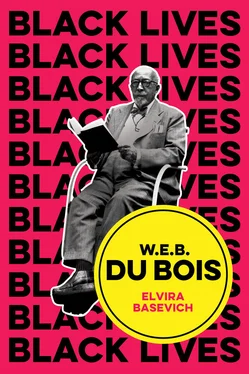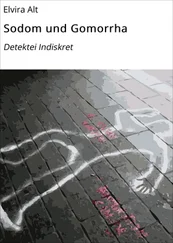In an interview, Garner’s youngest daughter, Emerald Garner, responded to the news that four years after Pantaleo had killed her father he was finally fired: “We’re grateful that someone sees what we see.” 12In contrast, the NYC police union leader, Patrick Lynch, denounced Pantaleo’s firing. Lynch asserted that the firing encourages assaults on police officers. Of course, police officers’ distorted perception of their own vulnerability to attack by African Americans rationalizes their use of deadly force in the first place. Moreover, officers often fabricate police reports to suggest a victim posed a threat, knowing that they enjoy the public’s trust that their black and brown victims lack. The public’s inclination to trust police officers and distrust their victims persists, in spite of video footage of fatal police encounters. In response to Lynch, Emerald Garner said:
So, he’s saying that de Blasio [mayor of NYC] left the police officers out on the street alone. Eric Garner was left on the street to die. And that’s on video. So, if they’re saying that the mayor abandoned them and they’re so angry that a police officer broke the rules and got penalized for it, that’s really what the problem is. The problem is they never thought in a million years that this cop would be fired because of a black man. And I think that’s honestly what they thought. And the fact that he is fired, it makes them upset, because it’s like, “We’ve been getting away with it for so long, so who are you to tell us to stop doing what we’re doing?” And that’s just how I take the whole situation, because a wrong was done. Like, at some point you have to stop and say Eric Garner was killed for no reason. He could have been saved. They neglected to save him. 13
As Emerald Garner points out, Lynch never imagined – and resents – the idea that officers could face repercussions for their actions, even as most assailants like Pantaleo avoid criminal prosecution. The so-called “Blue Lives Matter” movement, which appeared in response to the Black Lives Matter movement, mobilizes the law enforcement community against police “vilification.” In a press release, the “Blue Lives Matter” movement states that black rights activists “spread the absurd message that people were being shot by law enforcement simply because of the color of their skin. Even our political leaders pandered to these criminals and helped to spread this false narrative.” 14The distrust of black voices is so intense that the Black Lives Matter movement is dismissed as a cover for black criminality and as outright irrational. Equating black rights activists with “criminals,” the countermovement invokes a timeworn racist theme that holding white-controlled institutions accountable for anti-black violence means somehow harming whites. Not only does it deny black vulnerability to police violence, it treats the call for police accountability as a threat .
Just as the white-controlled polity had once rationalized slavery – and wrote it into the Constitution – as if it were consistent with, rather than a contradiction, of liberal ideals, in our white-controlled polity today, public habits of moral judgment are often shaped by the denial of the moral and epistemic value of black voices. Du Bois believed that an effect of the color line is that the white public fails to register moral injuries against African Americans as a contradiction of democratic ideals. The white public struggles to “see” beyond the color line the people who live and strive there as making a legitimate claim on their will. And this failure to “see” black humanity can be so strong that even video footage of the destruction of the black body does not shake it.
The same year that the federal government enacted the first anti-lynching bill, Congress passed the “Blue Lives Matter” bill by a vote of 382 to 35. The Protect and Serve Act of 2018 makes it a federal crime to assault a police officer and categorizes attacks on law enforcement as a “hate crime.” 15The Senate is expected to pass the bill in 2020, at which point it will be ready for Trump to sign into federal law. A version of the bill has been proposed or passed in more than 30 states. The notion that the police constitute a maligned social group captures how much the federal government continues to distrust African-American claims that they are especially vulnerable to police violence. Though the days when Sam Hose’s knuckles appeared in a shop window are thankfully gone, racial fault lines remain that influence public habits of moral reasoning about who to believe and who is really in harm’s way.
Lifting the veil: de-colonizing the white moral imagination
The way the color line promotes distrust might suggest that each racial group is locked into its own version of reality. In a sectarian public sphere, social groups each have their own version of the world, bolstered by their preferred set of “alternative facts.” Du Bois believed it was possible to repair the bonds of mutual trust torn apart by the color line. Cultivating a shared sense of political fate – the mutual recognition that the advance of each is a condition for the advance of all – is necessary to ensure that democratic politics does not become a mere public contest for grabbing power and asserting self-interest. But this is difficult to do if non-white racial groups inspire fear and resentment in the white moral imagination. Du Bois maintained that white Americans must carry the onus of reparative justice by developing their moral perception and demonstrating their trustworthiness to black and brown communities. In order for the polity to be reconstituted as a racially pluralistic whole, each member of the polity must feel as though their fate is an object of genuine concern for others. In cultivating a sense of interracial civic fellowship, Du Bois took pains to show the manner and depth to which white Americans have contributed to the problem of race and racism, i.e., the problem of the color line. He does this not to dismiss whites’ capacity for advancing racial justice reform. Indeed, he always believed that white supremacy is eliminable from the polity. Rather, in offering a sober account of whites’ role and complicity in white supremacy, he aimed to outline the forms of affective and cognitive labor that are necessary to restore their trustworthiness in communities of color. De-colonizing the white moral imaginations requires welcoming non-whites as civic fellows and showing that one is prepared, in turn, to undertake efforts and even sacrifices on their behalf. Consistent action to advance the standing of the worst off ultimately necessitates giving up an illicit claim to power. In return, one might repair the recognition of oneself as a genuine civic fellow, which is intrinsically valuable insofar as the pursuit of justice is an end in itself and is manifest when all persons believe that their life is an object of genuine concern for others.
In Souls , Du Bois’s critique of modern American society begins with a discussion of the so-called “Negro Problem.” 16His formulation of this “problem” poses a question to the oppressed: “How does it feel to be a problem?” 17With this rhetorical move, Du Bois at once represents the experiential quality of the first-person black experience of Jim Crow – that black people are made to feel like something is wrong with them, that they are the problem – and points forward to a new way of talking about race. Rather than presenting anti-black racism as a problem for black people, he makes it a problem for white people . To be sure, the kind of problem that race is for whites excludes subjection to racist disrespect and violence. Rather, Du Bois points out that the color line is nourished by white habits of judgment about non-whites. Whites render dark skin a “problem” by stigmatizing it and are often the wellsprings of racist hatred and ill will, as well as blank indifference or ignorance about racial realities.
Читать дальше












